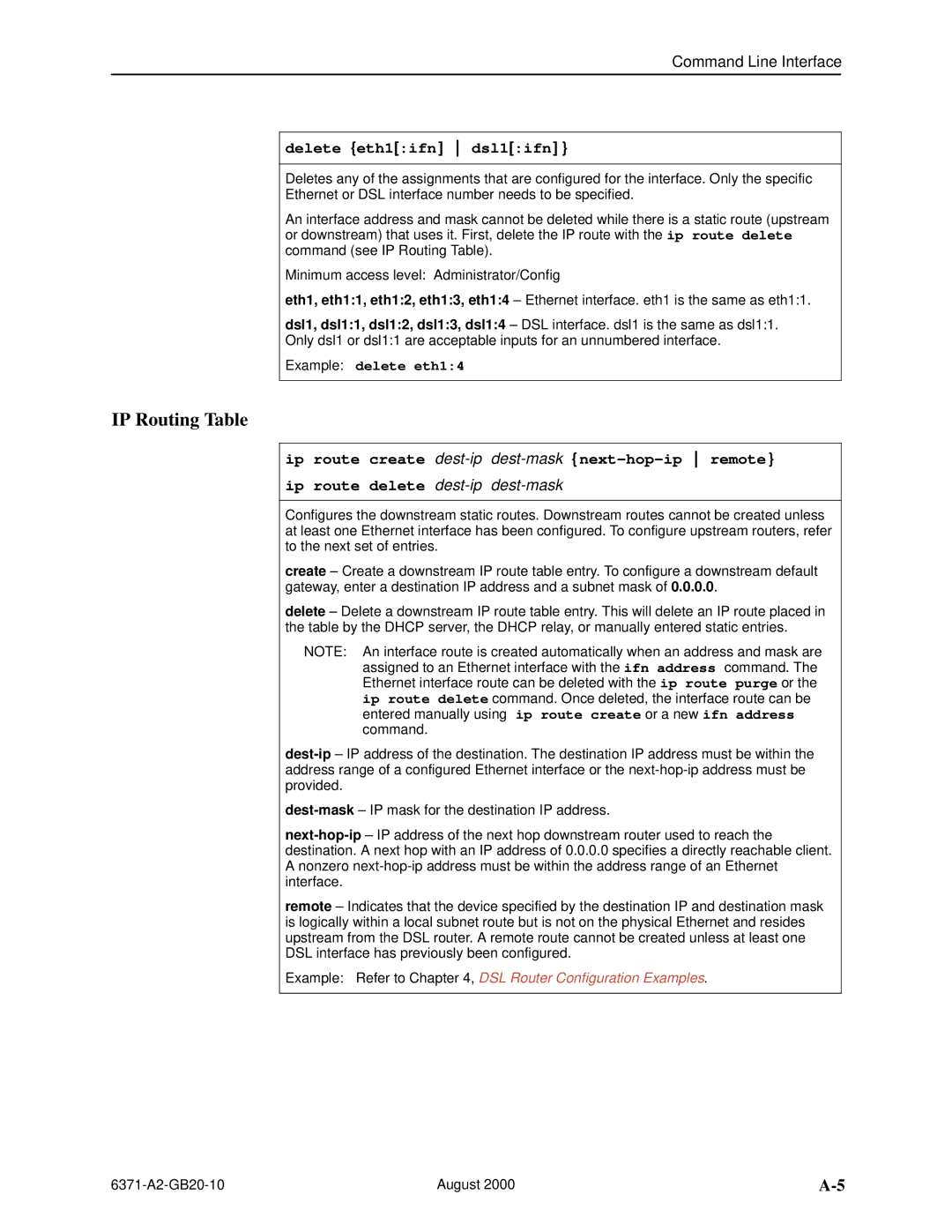
Command Line Interface
delete {eth1[:ifn] dsl1[:ifn] }
Deletes any of the assignments that are configured for the interface. Only the specific
Ethernet or DSL interface number needs to be specified.
An interface address and mask cannot be deleted while there is a static route (upstream or downstream) that uses it. First, delete the IP route with the ip route delete command (see IP Routing Table).
Minimum access level: Administrator/Config
eth1, eth1:1, eth1:2, eth1:3, eth1:4 ± Ethernet interface. eth1 is the same as eth1:1.
dsl1, dsl1:1, dsl1:2, dsl1:3, dsl1:4 ± DSL interface. dsl1 is the same as dsl1:1. Only dsl1 or dsl1:1 are acceptable inputs for an unnumbered interface.
Example: delete eth1:4
IP Routing Table
ip route create dest-ip dest-mask { next-hop-ip remote}
ip route delete dest-ip dest-mask
Configures the downstream static routes. Downstream routes cannot be created unless at least one Ethernet interface has been configured. To configure upstream routers, refer to the next set of entries.
create ± Create a downstream IP route table entry. To configure a downstream default gateway, enter a destination IP address and a subnet mask of 0.0.0.0.
delete ± Delete a downstream IP route table entry. This will delete an IP route placed in the table by the DHCP server, the DHCP relay, or manually entered static entries.
NOTE: An interface route is created automatically when an address and mask are assigned to an Ethernet interface with the ifn address command. The Ethernet interface route can be deleted with the ip route purge or the ip route delete command. Once deleted, the interface route can be entered manually using ip route create or a new ifn address command.
remote ± Indicates that the device specified by the destination IP and destination mask is logically within a local subnet route but is not on the physical Ethernet and resides upstream from the DSL router. A remote route cannot be created unless at least one DSL interface has previously been configured.
Example: Refer to Chapter 4, DSL Router Configuration Examples.
August 2000 |
